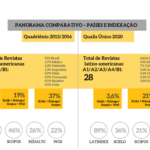By Nicholas Cop

Photo: Ano Lobb.
Could we take all the funds spent globally on scientific journal subscriptions by academic libraries, research centers and others, and transition them, or re-purpose them to pay for publishing those same journals and articles in open access? This would achieve a dream of the Open Access movement, and for society as a whole. Access to all published knowledge resulting from scientific research would no longer be restricted, anywhere in the world, by any form of barrier such as a paywall! The public good would be upheld. With no additional investments.
A recent and very interesting study1 by the Max Plank Digital Library, published as a White Paper on Open Access Policy, looks at precisely this scenario. It quantifies, for what appears to be the first time ever, if such a dream is possible and concludes that it is indeed!
The study begins by pointing out the rapid growth in open access publishing, and that new journals have no real future if they are launched as subscription journals instead of as open access journals. It presents, as an example of a new journal in open access, the journal PLOS One which has become the largest journal in the world in terms of number of articles published and citations received.
The study’s analysis supports the proposal for a change in the underlying business model of scholarly publishing, shifting the payments for journal subscriptions to payments for open access publishing services, such as APC’s2 in what is called the Gold Road Open Access. In this scenario, academic library acquisition budgets for journals could be consolidated and thus transformed into a budget for publication services in open access.
In general, fairly reliable numbers on APC’s are currently being produced. Funders, institutions and academic libraries not only want to keep track of how much they pay, but also want to make sure they are not being double-billed in the case of hybrid journals. Funders and institutions are also increasingly interested in verifying that articles for which APC’s have been paid are indeed made available in open access.
The study uses a very clever, simple and clear method to support its premise, and the mathematics is fairly straightforward. APC data for Germany, the UK and France was used to derive an average APC of EUR 2,000 per article3 for the calculations. Then, each country’s total production of scientific papers and reviews was deduced so that multi-authored works were counted only once under the corresponding author’s country. This number was called “APC-relevant papers”, in other words, the real number (de-duped) of papers and reviews representing the country’s scientific output which could be charged an APC were they all financed to be published in open access.
How much a country could have spent if all of its scientific output were published in open access was then calculated:
(APC-relevant Papers) X APC = total of estimated payments to publish in open access
This result was compared with the estimated total expenditures of the country in journal subscriptions. In all cases the subscription expenditures exceeded the calculated APC expenditures (Table 1), indicating that there is enough money in the system for a total transition to Gold Road Open Access with no financial impact or risk.
Table 1 – Total subscription expenditures (2013) vs. total anticipated APC expenditures
Note: Data is for 2013. Average APC used is EUR 2000. Data for the total number of articles is from Web of Science. Data for the total expenditures on subscriptions was derived from key analysts such as Simba and PNB Paribas. The APC relevant figure for the US was extrapolated based on the trend in Germany, the UK and France.
A study similar to this one is being undertaken in the US. The purpose is to investigate a sustainable APC model for publishing in open access and should provide, as one of its outputs, a clearer estimate of what is provided in Table 1 regarding the total APC and journal subscription expenditures for the US.
The Max Plank Digital Library performed the same analysis at the institutional level to see how the institutions might be affected financially with such a complete transition to open access publication. The number of APC-relevant publications for an institution was calculated to be in the range of 40% to 60% of an institution’s total output. This figure was based on what is reported by the approximately 30 German universities that participate in the DFG (German Research Foundation) APC funding program, and by the more than 10 years experience that the Max Plank Institutes has in supporting the APC’s of its researchers. The results of this analysis were even more pronounced than they were for the country level in support of a total transition to open access.
We are already on the path…
Some publishers, such as the IOP and the Royal Society of Chemistry, are experimenting with a new type of hybrid model called “offsetting” which offsets the subscription costs of journals according to the APC’s paid for the open access articles published in them. This offset model, if taken to its logical conclusion, could provide the business model for transitioning all subscription expenditures to funding open access services (APC’s) in order to publish all scientific journals and articles in open access. Thus, there is hope that, progressively, all scientific journals can be published entirely in open access!
Initiatives in parallel with the offsetting model, such as the ESAC initiative, can bring standardization to work flows and to the administration of charges for open access services, and can help further quantify and facilitate the transition from a subscription based system to a sustainable system of open access publication.
Key points from the study
The four key points, or “Insights” as they are called in the study, are truly enlightening and are worth repeating here (the headings have been put in by the author of this post):
Sustainability
- Under the current subscription system, a figure between EUR 3,800 and 5,000 is already being paid per research article through library subscription spending.
- There is currently already enough money in the system. A large-scale transformation from subscription to open access publishing is possible without added expense.
Cost Analysis
- For a meaningful cost analysis it is important to differentiate the APC-relevant articles (corresponding-author papers) from the rest of the publication record. Early examples at the country level further substantiate the claim that an open access transformation can be achieved without financial risk.
- While the APC-relevant article share at a country level is very often around 70%, it can easily go down to about 50% at the institutional level. This fundamental principle of allocation must be considered when calculating the costs for an open access transformation.
Conclusions
The fact that there currently seems to be enough money in the subscription based system to fund open access publishing services directed towards publishing all scientific journals in open access gives impetus to achieving the dream of public access to all scientific research knowledge without barriers. And we are on the path already! This transition should also take away the tremendous financial pressures on developing country academic libraries and research institutes which are subject to fluctuating foreign currency exchange rates and conversion restrictions in paying for journal subscriptions. These institutions generally have very limited subscription budgets compared to their counterparts in the developed countries. This puts their researchers and educators at a great disadvantage globally in access to information needed for economic, social and technological advancement.
Notes
1 SCHIMMER, R., GESCHUHN, K.K., and VOGLER, A. Disrupting the subscription journals’ business model for the necessary large-scale transformation to open access. MPG. PuRe. 2015. DOI: 10.17617/1.3.
2 Author Processing Charges, the fee generally paid by authors to journals to publish in Gold Road Open Access.
3 APC data was taken from Max Planck Digital Library APC records that are uploaded to the OpenAPC initiative on GitHub, the German Research Foundation (DFG), the Austrian Science Fund (FWF), the SCOAP3 Consortium, and Wellcome Trust.
References
BJÖRK B.; SOLOMON, D. Developing an Effective Market for Open Access Article Processing Charges. Welcome Trust. 2014. Available from: http://www.wellcome.ac.uk/stellent/groups/corporatesite/@policy_communications/ documents/web_document/wtp055910.pdf
IOP Publishing and UK university libraries collaborate on open access offsetting pilot. RLUK Research Libraries UK. Available from: http://www.rluk.ac.uk/news/iop-publishing-uk-university-libraries-collaborate-open-access-offsetting-pilot/
IOP Publishing launches open access deal. IOP Institute of Physics. Available from: http://www.iop.org/news/14/may/page_63308.html
Principles for Offset Agreements. JISC Collections. Available from: http://www.jisc-collections.ac.uk/Global/News%20files%20and%20docs/Principles-for-offset-agreements.pdf
SCHIMMER, R., GESCHUHN, K.K., and VOGLER, A. Disrupting the subscription journals’ business model for the necessary large-scale transformation to open access. MPG. PuRe. 2015. DOI: 10.17617/1.3.
UC Davis and CDL Investigation of the Institutional Costs of Gold Open Access. ICIS. Available from: http://icis.ucdavis.edu/?page_id=286
External link
Efficiency and Standards for Article Charges – <http://esac-initiative.org>
 About Nicholas Cop
About Nicholas Cop
Nicholas Cop is the Founder and President of Nicholas Cop Consulting, LLC, based in Florida, USA. In addition to being a consultant to the SciELO Program, the company provides information services internationally to academic institutions and libraries, information and research networks, and publishers. Nicholas graduated in physics (B.Sc.) from McMaster University, Canada, with postgraduate studies undertaken at the University of Toronto, also in Canada.
Como citar este post [ISO 690/2010]:


















Your conclusion is that under the current subscription system, a figure between EUR 3,800 and 5,000 is already being paid per research article through library subscription spending. If we assume that the average article processing charge (APC) for gold open access is between EUR 700 and 800, we could easily derive a scenario where libraries and funding organisations may save a significant percentage of the current spending if the model flips from toll-access to open access. However, a clear statement by those organisations is required to enforce that flipping process. This statement is still missing. Why? Furthermore it is interesting that this change would not be considered as a so-called disruptive process in terms of the research output because the transition will have an impact on the business model of publishers (and their revenue streams or margins) only. Therefore for the publishing industry this flip may occur as a disruptive transition, and this could explain the somewhat more and more aggressive way how their lobbyists currently appear in the public.
Exactly! I think you make a critical point when you state that the change would not be considered a disruptive process in terms of research output, but would be quite disruptive to the business models and revenue streams of publishers. Also, pricing would finally be quite transparent, to the advantage of the funders and academic libraries.
Clear statements are indeed required not only from national agencies and governments, but from consortia of academic libraries as well. These libraries are the ones that really feel the “heat” when it comes to subscription purchases and renewals since they are caught in the middle, between researchers who absolutely require the journals and the publishers who continue to implement price increases that the libraries and universities can ill afford.
Given the large sums of money involved in the system, and entrenched interests, the activation energy to a complete transition to OA is enormous, with a corresponding chasmic potential barrier. But I’m hopeful that this transition will come sooner than later since pressure continues to build in favour of such a transition.
I have a few questions about this MPS analysis and your assessment of it:
1) Given the track record of publishers, why shouldn’t they increase APCs as they have increased subscriptions, until all APCs become unsustainable as well? Isn’t precisely that their fiduciary duty? Why should they forsake that duty and if they did, wouldn’t their board just get replaced with one that would maximize profit?
2) Doesn’t migrating everything over to APCs just postpones the inevitable and keeps one of the most profitable businesses in history (except for drug trafficking and arms trade I guess) even more profitable?
3) The journals most relevant for a scientist’s career are highly selective and would, by their own calculations, need anywhere between US$30k and US$50k per article to stay in business. Why should they not be able/willing to charge, say 50k or 75k per article? After all, people pay 250k for a Harvard degree, what’s another 75k for an article that virtually guarantees tenure? Doesn’t such a scenario make everything seem even worse than it is now?
These are excellent questions! First, I must say that there are two issues here, and although they are related, they can still be uncoupled as concepts. The first is of freedom of the journals and of the information contained in them, and the second is of the business model, charges and business profits involved.
My assessment of the purpose of the article is to show that the money currently being spent on journal subscriptions could easily support all journals as Open Access publications using today’s average APC’s. In other words, all the paywalls could be broken down to free academic journals for anyone and everyone to access without the need for additional funds. I think the level of APC’s, business models, profits and the like could be addressed in a follow up to the article.
Now, to your questions.
1) Publishers could indeed increase APC’s until they become almost unsustainable. The track record of publishers does not indicate anything to the contrary, but publishers do want to survive, so they will go as far as possible yet just be short of unsustainable if they can!
I would expect resistance from funders and the public in general to high APC’s since APC’s are finally starting to be monitored more closely by large funders such as the Wellcome Trust in the UK. There are also the public Open Access initiatives whose APC charges are quite low in comparison and offer a competitive alternative. But we need to understand how a low APC is supported (government funds? a non-commercial focus?). And what do we do about the IF (Impact Factor) influence on APC’s and on its use in evaluations?
I think that the issue of high profits and of maximizing them, as irritating as it is for those who have to purchase the subscriptions and for those who cannot access the journals because their library can no longer afford the subscriptions, is an issue that should not be driving our discussion. We cannot control publisher profits, nor can we set a ceiling for them. We can, however, legislate or control what is done with public funds. We could, for example, take the case of many Web tools which are free but which offer Premium versions for a price. Under this model, perhaps basic publication could be a free default with value-added at a cost. Nevertheless, I am afraid that even in such a scenario the value-added would be the option most preferred because of the importance of visibility to an article and to its authors.
2) I like your reference to drug trafficking and arms trading. Very high risk businesses! Anyway, how APC’s will pan out in the end is still up for discussion. They are a rather new business model. However, they do represent an important difference to what we have now, i.e. subscriptions. They do free up the content in Open Access for all to read. That in itself is a tremendous benefit for everyone. As for the profits, I’ve made my comment above.
3) I am not familiar with their calculations but would question them. The astronomical sums for education are in the US context and do not apply in most of the world.
I would expect that suggested APC’s at the levels you mention would be greatly resisted by funders who keep track of them and by those managing public funds,. This, in turn, should spawn other journals or other solutions.
Pingback: bjoern.brembs.blog » What happens to publishers that don’t maximize their profit?
Pingback: Open Access in Latin America free of predatory journals | Portal El Bohio
Pingback: bjoern.brembs.blog » How gold open access may make things worse
Pingback: bjoern.brembs.blog » Please address these concerns before we can accept your #OA proposal
Pingback: bjoern.brembs.blog » Is a cost-neutral transition to open access realistic?